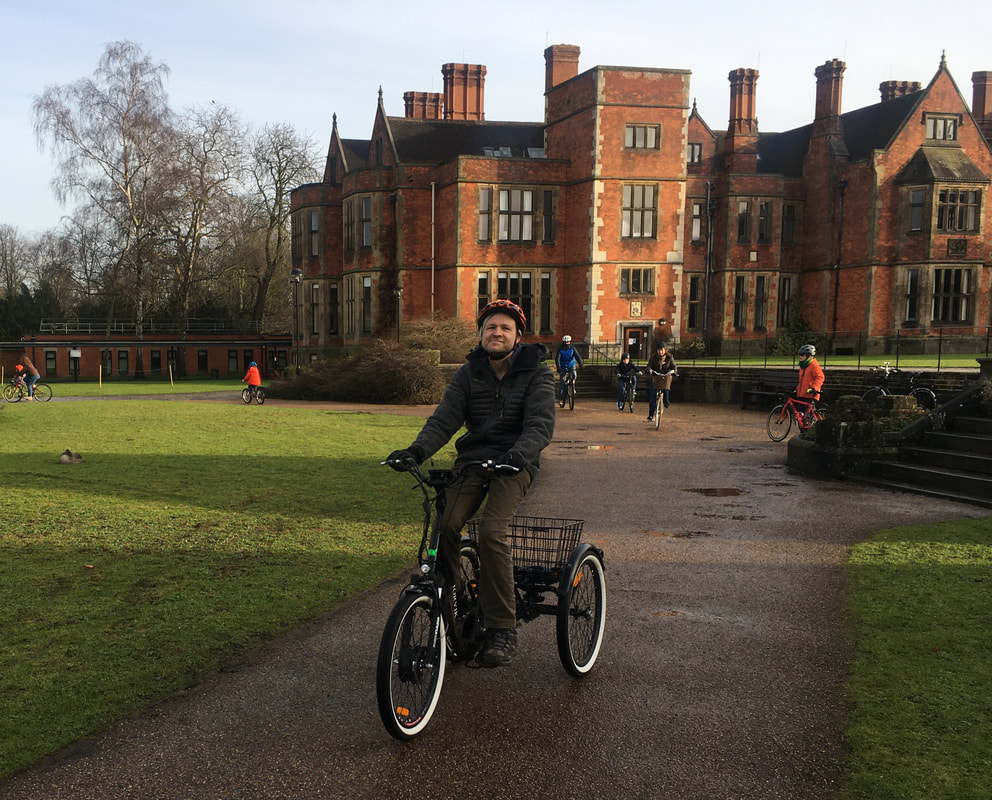We are always looking to share individual perspectives, as these stories are powerful in showing Disabled people that cycling is a possibility, and to also encourage them to consider the many types of adaptive cycles that exist. Last June, we re-posted Jamie Wood’s blog post about cycling on 4 wheels (click here to read the post). Since then, Jamie has moved from stabilisers to a trike, to ensure that he can continue cycling with his medical condition. Once again, Jamie has very kindly allowed us to re-post his blog piece – this time about changing from 4 to 3 wheels – which you can read about below!
3 months ago I bought a trike. Its fun. Its easy. It is not as powerful or as flexible as my old stabilised bike, but it is more stable and dependable. I expressed a strong opinion for stabilisers before, so I feel I need to update this blog.
So why did I change? Sadly, my condition is not fixed. Multiple sclerosis is an unpleasant mixture of plateaus and deterioration with no particular predictability. Over the last 2 years it has been too much of the latter for my taste. The stabilisers were a brilliant short-term solution for me, I had a fantastic year on them, but sadly interrupted by Covid and lockdowns (one of my motivations was travelling, and that became a non-issue).
Ultimately though they were not able to keep up with my changing needs. I needed more stability and more dependability, and stabilisers were not able to keep up. Partly it was because they were always ad hoc, added to a larger bike than intended. I needed slightly wider arms, slightly bigger wheels. This is a common problem I find: I’m long limbed and six foot tall and a lot of mobility aids are not well suited to my frame.

I am still convinced that good adult stabilisers can be an excellent solution, but sadly I don’t have the time, energy and flexibility to explore that space as I originally intended. My twitter handle will remain at @4wheelstable and I’m very happy to discuss trikes vs. stabilisers on that platform.
